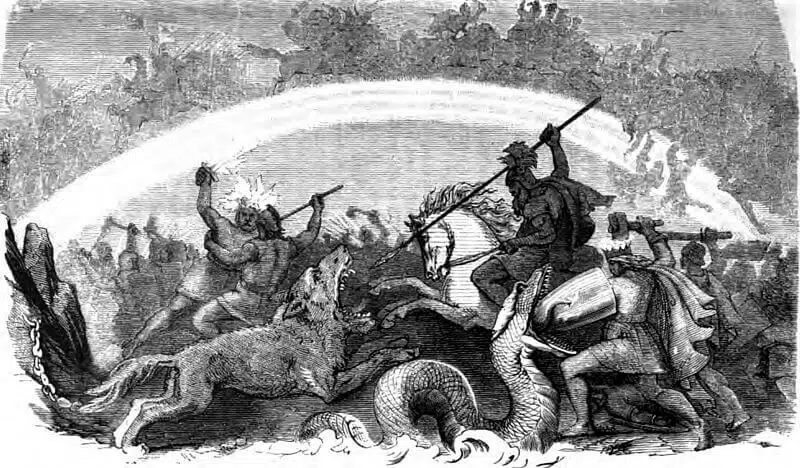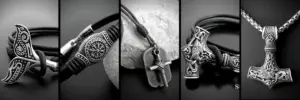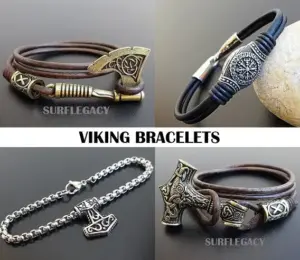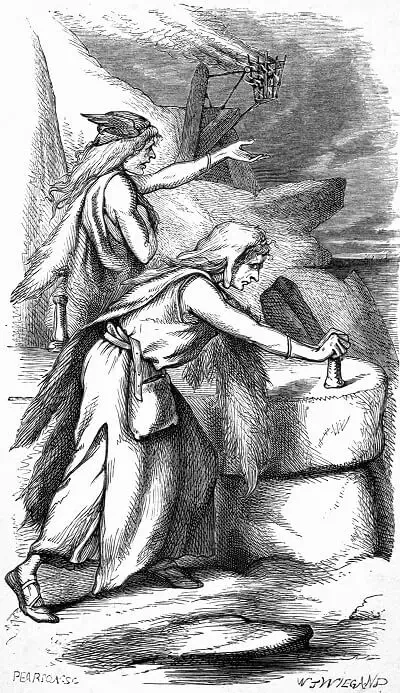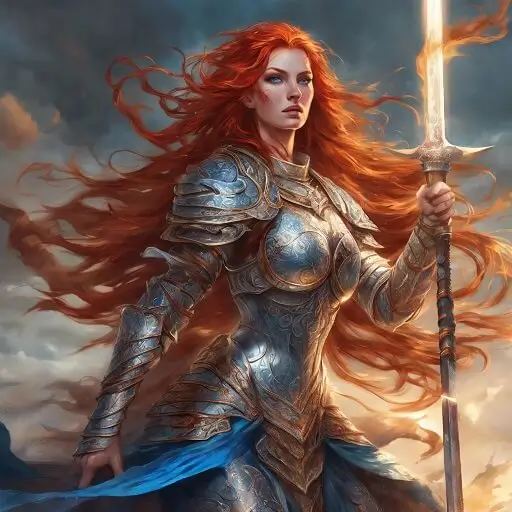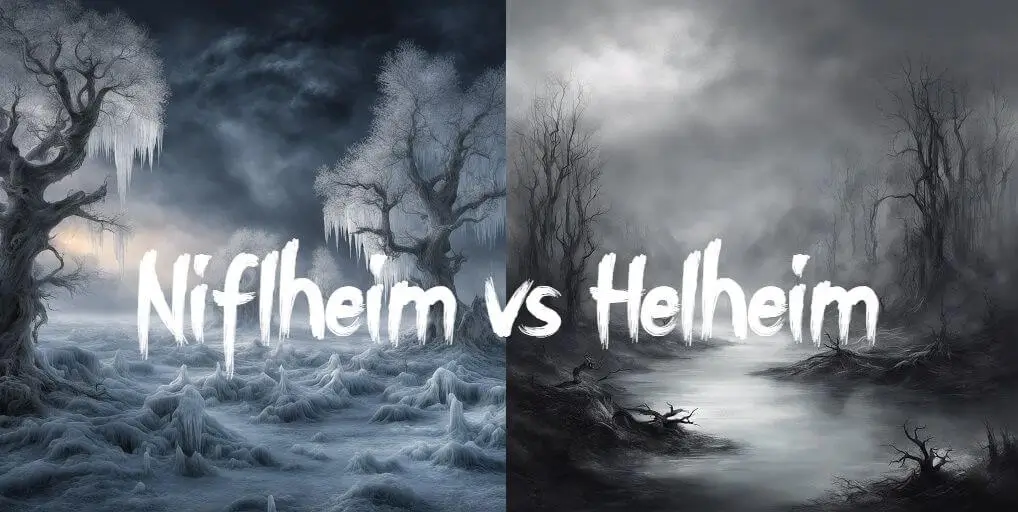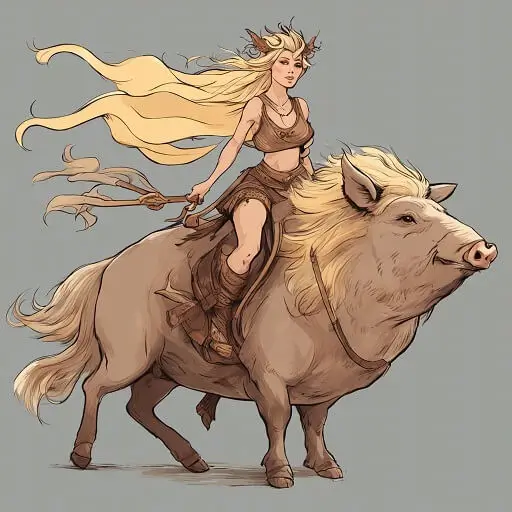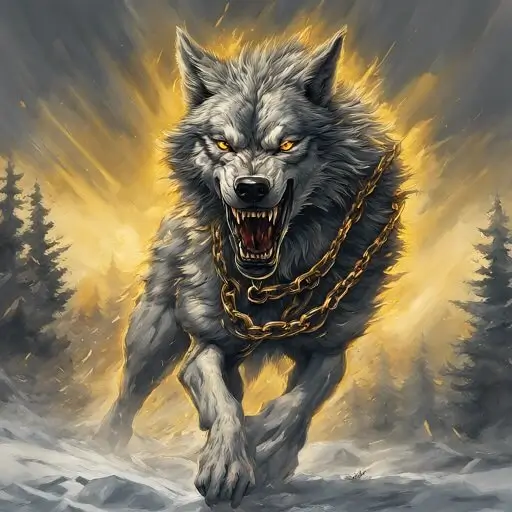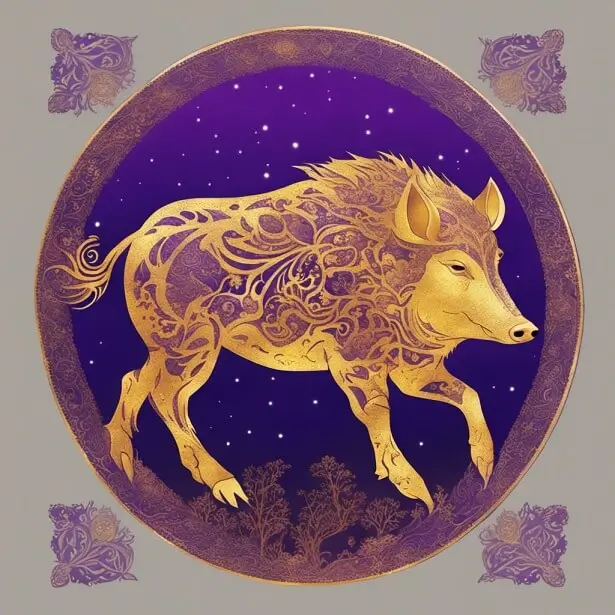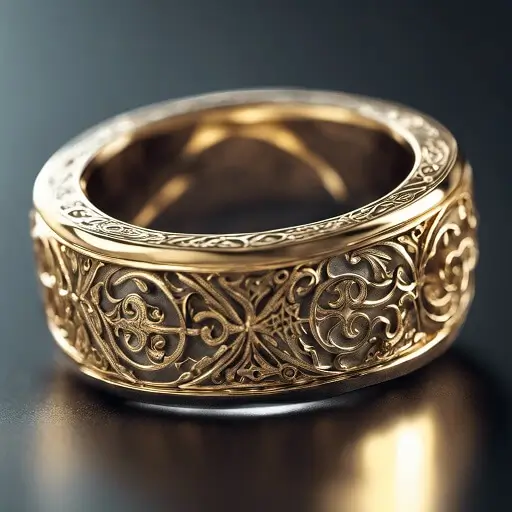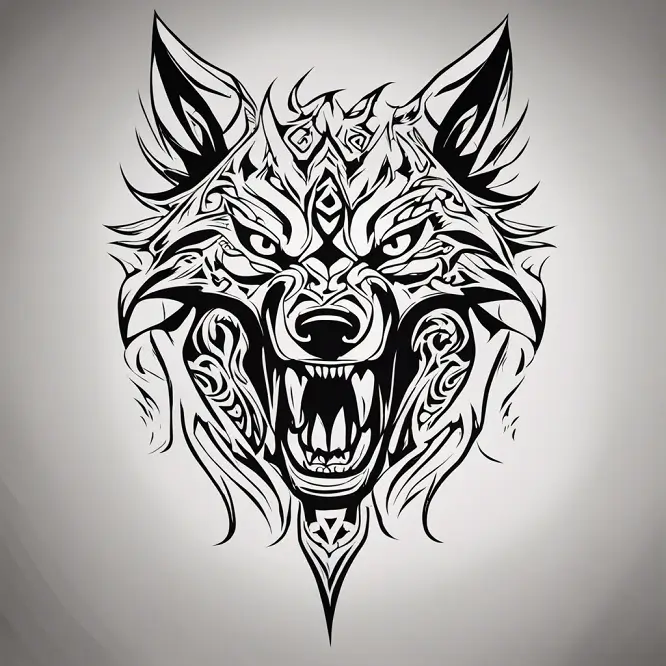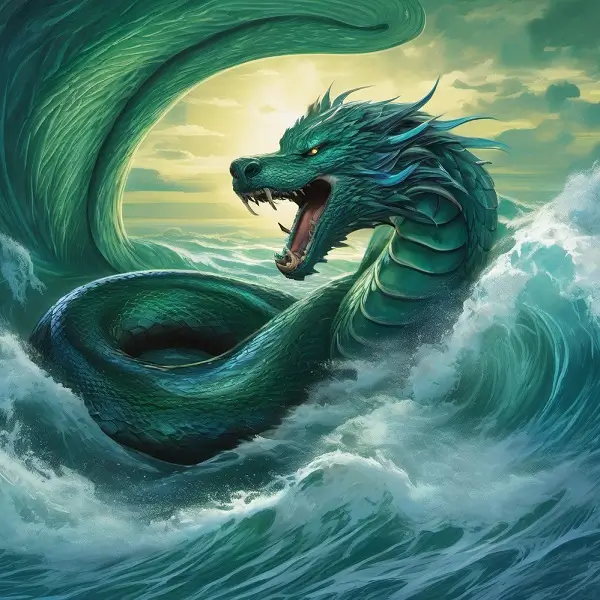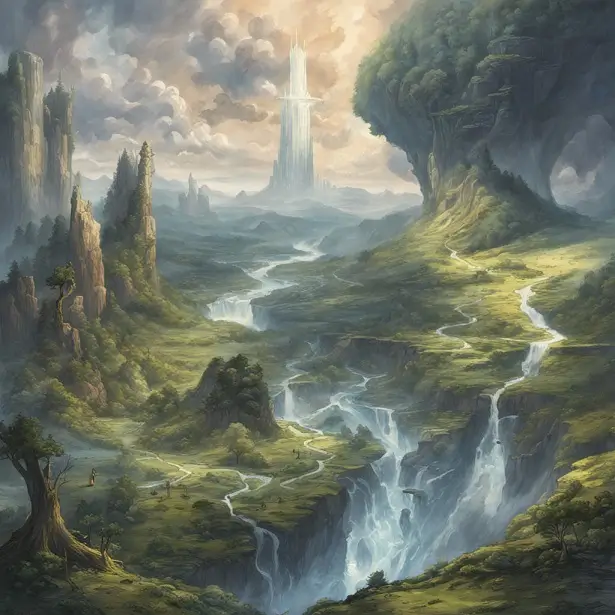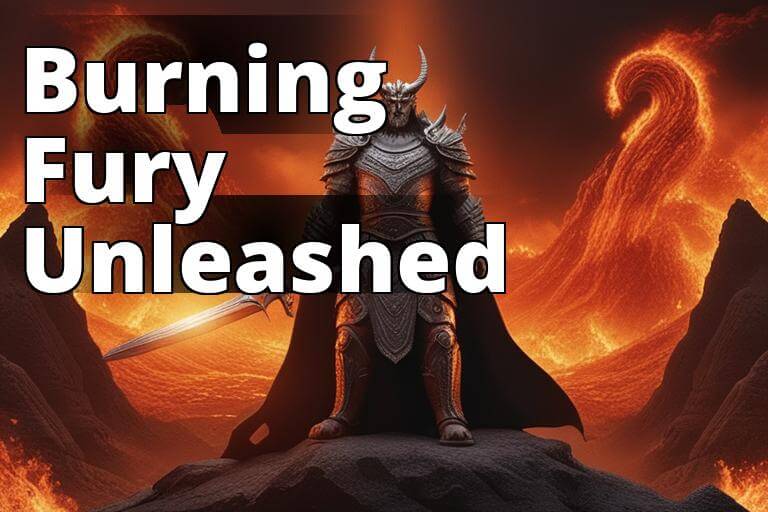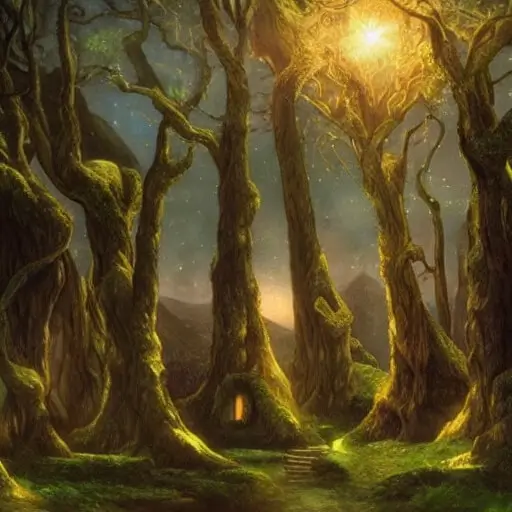Ragnarok is the cataclysmic destruction of the cosmos foretold in ancient Norse mythology. Culminating in an epic battle between the gods and the forces of chaos, evil, and death, it will result in the deaths of many beloved gods and the end of the known world.
Yet Ragnarok is not a true ending, but a transition from one world to the next, the dawn of renewal that emerges after dissolution.
The Poetic Edda and Prose Edda contain vivid accounts of Ragnarok interwoven with rich symbolism that provides insight into the worldview of the ancient Norse people. By analyzing the events, major figures, and deeper meaning of Ragnarok, we can understand why this tragic yet meaningful myth was so profound and important to Norse culture.
Key Takeaways
- Ragnarok represents the cataclysmic destruction and renewal of the cosmos foretold in Norse mythology.
- It entails a final, destined battle between the Norse gods and the forces of chaos that ends with the death of many major gods including Odin and Thor.
- Ragnarok sees the world immersed in fire and water, returning it to its primordial state before the cycle begins anew.
- Figures like Loki, Fenrir, Surtr, Jormungand, and Heimdall play pivotal roles in triggering and shaping the events of Ragnarok.
- Ragnarok symbolizes major themes in Norse mythology and worldview including mortality, inevitable fate, and cyclical time.
- Ancient Vikings saw Ragnarok as inevitable prophecy, which shaped their values of courage, honor, and embracing one’s fate.
- Ragnarok left a lasting impact on modern fantasy fiction, video games, and movies as a vivid depiction of a mythical apocalypse.
Etymology and Alternative Names
Ragnarok roughly translates to “fate of the gods” or “doom of the gods” in Old Norse, indicating it decides the destiny of the gods themselves. It is spelled Ragnarök in Old Norse sources. Some scholars break the word into two parts – “ragna” meaning the ruling powers or gods, and “rök” meaning development, origin, fate, or doom.
Alternative names for Ragnarok that appear in the sources include:
- Ragnarøkkr – Twilight of the Gods
- Aldar rök – Fate of mankind
- Alfar rök – Fate of the elves
- Tíva rök – Fate of the gods
- Þá er regín deyja – When the gods die
These kennings underscore that Ragnarok was understood as deciding the fate not just of the gods but the entire known world, including humans, elves, and other beings.
The Coming of Ragnarok
According to the Prose Edda, Ragnarok will be heralded by a period called Fimbulwinter, the “mighty” or “great winter”, which will last three years with no intervening summer. It will be marked by vicious winds and bitter cold, bringing snow from all directions.
The warmth of the sun will fail, plunging the world into unprecedented cold and darkness. With such hardship, all morality will disappear as mankind struggles desperately to survive. Brother will kill brother, fathers will kill sons – the bonds of family and kinship will collapse completely.
This age of moral dissolution will be known as the Time of Axes, Time of Swords, Time of Wolves, and Time of Winds, indicating the prevalence of violence and lawlessness.
The wolves Skoll and Hati, who respectively chase the sun and moon through the sky, will finally catch and devour their prey, causing the sun and moon to disappear.
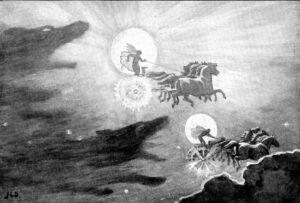
Skoll and Hati pursuing sol and Mani
Yggdrasil, the World Tree that holds up the Nine Worlds, will shake violently, and the stars will vanish. The unrelenting winter and convulsions of the earth will break the fetters and chains that hold back destructive and chaotic forces.
The wolf Fenrir will break free from the chain Gleipnir, made by the dwarves to bind him. Jormungand, the World Serpent that encircles Midgard (the world of humans), will rise from the ocean depths and make landfall, causing the seas to spill over the earth.
The giant wolf Garm, guarding the entrance to Helheim, will also break free from his bonds. Naglfar, the ship made from the fingernails and toenails of the dead, will set sail. Its crew will be frost and fire giants led by Loki, gathering their forces at Vigrid, the destined plain of battle.
Heimdall, watching for these signs from his post as sentry of the gods, will sound his horn Gjallarhorn loudly to announce the advance of their enemies.
Odin will summon the greatest heroes from Valhalla, while the gods will meet in council. Odin will visit the head of Mimir, the wisest being of all, for guidance. But the Norns have already woven the end into their tapestry – Ragnarok cannot be averted.
The Final Battle
At Vigrid (“battle shaker”), the assembled forces of the gods and their allies will fight the monstrous forces of Loki, the giants of frost and fire, and other entities of chaos, destruction, and death. This destiny cannot be avoided.
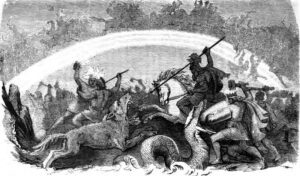
Freyr, the god of fertility and peace, lacking the sword he once gave away, will be the first to fall to the fire giant Surtr’s brilliant flaming sword. The brave god Tyr loses his life battling the hound Garm from Helheim, but manages to deal the beast a fatal wound as well.
Thor, the mighty god of thunder and storms, will destroy the serpent Jormungand with his hammer Mjolnir, but succumb to the serpent’s venom after taking just nine steps. Odin, the father of the gods and the Allfather, will be swallowed whole by Fenrir as foretold, who will then be killed in revenge by Odin’s powerful son Vidar. Loki and Heimdall, age-old enemies, will slay one another.
The fire giant Surtr will unleash flames from his sword that will engulf the earth and the heavens. The great World Tree, Yggdrasill, will burn, nine worlds collapsing around it.
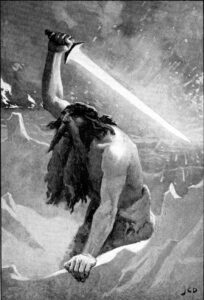
The cosmos itself will burn and sink into the all-engulfing sea. This is the complete dissolution of all worlds and all life, returning creation to its primordial state – the Ginnungagap, the yawning void.
Renewal and Rebirth
Yet Ragnarok is not the true end. A new earth will eventually emerge from the waters, fresh and fertile. Lush green fields will grow unsown. The surviving gods will reunite joyfully on the plain of Idavollr. They will include:
- Vidar and Vali, sons of Odin
- Modi and Magni, sons of Thor wielding his hammer Mjolnir
- Njord, who returns from Noatun, possibly the realm of the Vanir gods
The golden gaming pieces the gods once owned and played with in their glory days will appear again, found lying in the grass. The slain gods Baldr and Hodr will return from the underworld. A new sun birthed by Sol will cross the sky once again.
Two human survivors, Lif and Lifthrasir, will emerge from the wood Hoddmimir where they sheltered during the cataclysm. They will populate the fertile land along with their offspring, signifying the creation of new life from destruction.
A wondrous hall called Gimle, more splendid than Valhalla itself, will exist where righteous people will live happily.
This renewal reveals that while Ragnarok subsumes everything that exists into oblivion, life will cycle again from death in a process of eternal return.
Major Figures and Roles
Several key figures play pivotal roles in the events of Ragnarok:
- Odin – The king of the gods who knows and accepts his fate to die at Fenrir’s jaws during the last battle. He prepares for this noble end.
- Fenrir – The monstrous wolf and Loki’s child whose destiny is to kill Odin and wreak chaos, signaling the end of the old order.
- Loki – The cunning, shape-shifting trickster god who turns against the Æsir and brings about Ragnarok by unleashing destructive forces.
- Skoll and Hati – Wolves that chase the sun and moon through the sky and finally devour them at Ragnarok, plunging the world into darkness.
- Surtr – The leader of the fire giants who wields his flaming sword to immolate the cosmos in fire, bringing the world to an end.
- Thor – The mighty god of thunder who battles the Midgard Serpent to mutual demise, losing his life to defeat this mortal foe.
- Jormungand – The enormous serpent that rises from the ocean depths to poison the world, killing Thor but meeting its own death in the process.
- Heimdall – The far-seeing guardian god who spies the coming enemies and sounds his horn Gjallarhorn to announce Ragnarok.
- Vidar – The strong, silent son of Odin who survives Ragnarok and avenges his father by slaying the mighty wolf Fenrir.
- Lif and Lifthrasir – The human couple who shelters through the catastrophe and repopulates the new world that emerges.
Interpretations and Theories
As a myth that offers insight into the worldview of the ancient Norse, Ragnarok has been interpreted in various ways by scholars. Here are some of the major theories about its meaning and origins:
- Cyclical Time – Ragnarok represents the Norse conception of cyclical time, embodied in the cosmic order perpetually moving from creation to destruction and then back again to renewal.
- Inevitability of Fate – The gods cannot avoid their destruction, illustrating the inexorability of fate as woven by the Norns who control destiny. Their end is inevitable.
- Mortality of the Gods – Unlike most belief systems where gods are immortal, the Norse gods can and do die, underscoring the theme that nothing lasts forever.
- Heroic Ideals – Knowing they face defeat, the gods choose to courageously embrace their destiny and fight nobly, epitomizing Norse ideals of heroism and strength.
- Proto-Indo-European Myth – Scholars cite parallels to Vedic, Germanic, and other proto-Indo-European myths describing apocalyptic clashes between gods and creatures of chaos, indicating common mythological roots.
- Volcanic Eruptions – Theories hold that the fiery destruction during Ragnarok was inspired by volcanic activity in Iceland and other Nordic regions. Fimbulwinter reflects the winters that follow major eruptions.
- Christian Influences – Some scholars propose that the themes of renewal, return of a peaceful golden age, and rule by a singular all-powerful ruler signify Ragnarok was influenced by Christianity later in the Viking Age.
Ragnarok vividly illustrates that no order, no matter how mighty or righteous, can withstand the sweep of time. But the legacy of courage passed down, and the fact life begins anew, offers deeper consolation.
The Significance of Ragnarok for the Vikings
To the ancient Norse and other Germanic peoples, Ragnarok was not just a myth – it was a prophecy. They believed these events were destined to occur at some future point, heralding the imminent end of their world and way of life.
This inevitability shaped how they understood existence and influenced their values and attitudes.
Nihilism and Acceptance of Fate
Believing the entire world would one day catastrophically end likely promoted a nihilistic or existential outlook, a sense that life was ultimately tragic and meaningless since nothing lasted. But Ragnarok also taught acceptance of fate. The gods themselves cannot avoid or overturn their destiny. Mortals too must accept that death comes for everyone.
Courage in Face of Doom
Importantly, Ragnarok provided a model for how to comport oneself nobly when faced with unavoidable doom. The gods know they will die but refuse to cower. They stand and courageously face their end without hesitation. Vikings embodied this ethos, meeting inevitable death – whether in battle, from illness, or old age – with brave acceptance.
Cyclical View of Time
The Norse saw time and creation as cyclical through Ragnarok, underscoring their affinity for cycles and patterns in nature evident in the changing seasons. Destruction leads to rebirth; life flourishes again even if the present order perishes. The underlying fabric of the cosmos endures eternally.
Actions Over Outcomes
Since one cannot control final outcomes such as the prophesied deaths at Ragnarok, Norse culture valued living rightly and nobly in the moment, focusing on how one acts regardless of the consequences. Legacy through actions and words mattered more than predetermination.
Honor in Struggle
Death and defeat were certain at Ragnarok. But this fueled determination to struggle on anyway for the sake of honor and courage. Fighting valiantly despite inevitable loss was in itself a worthy and noble deed. Victory or success were secondary to the nature of one’s actions and character.
Ragnarok showed Vikings that all things end eventually. But life continues in a constant cycle of death and rebirth. Courage and honor matter more than any outcome. Embracing this difficult but deep wisdom allowed the ancient Norse to face life’s harshest realities with heads held high.
The Destined Doom in the Mythic Sources
The Poetic Edda and Prose Edda contain the most extensive accounts of Ragnarok. While many kennings reference it indirectly, key poems provide richer detail:
- Völuspá – The most thorough depiction appears in this poem where a völva reveals Ragnarok to Odin. It recounts Fimbulwinter, the death of the gods including Thor and Odin, the world’s destruction by fire, its eventual renewal, and the return of lost gods from the underworld.
- Vafþrúðnismál – In this poem where Odin questions Mimir in disguise, references include the gods’ foreknowledge of their doom, humans Lif and Lifthrasir surviving Fimbulwinter, Fenrir swallowing Odin, Víðarr and Váli surviving, and Njörd returning to Vanaheim.
- Lokasenna – Loki foretells in this poem that he will lead the enemy army and how the gods will die at Ragnarok.
- Helgakviða Hundingsbana II – A brief stanza here likens a vision of the dead traveling through the sky to Ragnarok.
- Hyndluljóð – The goddess Freyja rides to the cave of the giantess Hyndla and forces her to recite various mythic lore and prophetic visions, including calling Ragnarok “the end of the gods.”
In Gylfaginning, the Prose Edda expands on these poems, detailing the omens of Fimbulwinter, events of Ragnarok, and the world’s violent destruction and renewal after. Together, these irreplaceable texts paint a rich picture of the Norse apocalypse.
The Archeological Evidence
Various archaeological discoveries also potentially depict the events of Ragnarok:
- The 11th century Ledberg stone in Sweden shows a man with his foot in the mouth of a four-legged beast, possibly representing Vidar and Fenrir.
- Thorwald’s Cross, a 10th century stone on the Isle of Man, shows a figure holding a spear downward at a wolf while a large bird sits on his shoulder, likely depicting Odin and Fenrir with his raven.
- The mid-10th century Gosforth Cross in England depicts a hunting scene and other figures interpreted as alluding to Ragnarok, including a man stabbing a beast and a man with a spear battling a wolf-like creature.
While speculative, these carvings suggest that Ragnarok was not just an abstract myth but a prophecy the Vikings anticipated and visualized.
Norse Apocalyptic Influences on Christianity
Some aspects of Norse apocalyptic myth seem to have influenced medieval Christianity as it spread across Scandinavia:
- Scholars propose the figure Suttungr in Skáldskaparmál may symbolize a Christian monopoly deity slaying a pagan pantheon at Ragnarok.
- Tensions between pagan and Christian worldviews are symbolized in the images of Norse apocalyptic warfare influenced by Revelation.
- Christianity absorbed the idea of cyclic time more akin to Norse mythology as the linear timeview of Augustinian Christianity was unable to suppress cyclical concepts.
- The figure of Surtr wielding a flaming sword that brings about world’s end through fire echoes imagery from Revelation.
- The dragon Nidhogg gnawing at Yggdrasil’s root reflects Revelation’s dragon seeking to destroy God’s creation.
- Concepts of regeneration and rebirth after apocalyptic destruction resemble Christian rebirth and resurrection.
As Christianity took hold across Scandinavia in the medieval period, it adapted and absorbed elements of existing Norse mythology it was unable to fully suppress or replace, including apocalyptic visions the two mythologies held in common.
The Modern Impact and Legacy
As one of the most spectacular apocalyptic events in world mythology, Ragnarok has profoundly captured modern imagination. References and adaptations appear across contemporary culture, from novels to comic books to video games.
Notable examples include the Thor comics and movies in the Marvel Cinematic Universe, Neil Gaiman’s novel American Gods, the TV show Vikings, and video games like God of War which directly incorporate and expand upon this apocalyptic myth.
Ragnarok affirms that no order, no matter how mighty, eternal, or divinely ordained, will last forever. Destruction comes for everything eventually, even the gods. But also that from every end comes a new beginning. Though bleak in some ways, Ragnarok ultimately expresses the resilience of life and light, that the cycle will continue eternally, giving hope that the story never truly ends.
Ragnarok – Frequently Asked Questions
What does Ragnarok mean?
Ragnarok roughly translates from Old Norse to the “fate of the gods” or “doom of the gods”, referring to the foretold destruction of the Norse deities.
When does Ragnarok take place?
The Old Norse sources do not give an exact date for Ragnarok, depicting it as an unknown future event that could arrive unexpectedly like a thief in the night.
Where does the battle of Ragnarok occur?
The final apocalyptic battle takes place on the field of Vigrid, a vast plain where the gods and their enemies gather as Heimdall blows the horn Gjallarhorn to announce the fight.
Who survives Ragnarok?
A handful of Norse gods survive including Vidar, Vali, Modi, Magni, and possibly Njord and some goddesses like Frigg. The human couple Lif and Lifthrasir also endure by hiding in the wood Hoddmimir.
Is Ragnarok the end of the world?
While Ragnarok entails the destruction of the known world and cosmos, a new world eventually emerges from the ashes, depicting the Norse cyclical view of time.
What happens after Ragnarok?
Ragnarok is followed by renewal, as a new earth rises from the sea on which the surviving Norse gods reunite, Baldr and Hod return from Hel, and Lif and Lifthrasir repopulate the realms.
Did the Vikings believe Ragnarok would happen?
Yes, the Norse likely did believe Ragnarok was inevitable prophecy and their legends suggest it deeply shaped their cultural values and worldview.
Ragnarok – Final Thoughts
In the vivid, imaginative myth of Ragnarok, the ancient Norse confronted ideas of apocalyptic death and destruction yet found stoic acceptance and even inspiration.
This epic prophecy of the cosmos torn asunder and renewed again reflects the remarkable sophistication of Norse beliefs – that life was truly transient, that fate could not be fought, and that courage in facing one’s destiny was virtue enough.
While parts of the myth are bleak, the promise that the story starts anew offers poignant consolation. Ragnarok remains a masterful depiction of destruction and rebirth that still awes and inspires, allowing us to find light even in darkness through bravery, wisdom, and honor.
Shop Norse Jewelry
Are passionate about Norse Mythology?
Finding the ideal piece of Norse Jewelry can be challenging and time-consuming, especially if you lack inspiration or don’t know where to look.
Surflegacy, has you covered. We have a wide range of Handmade Jewelry in various styles, shapes, colors, and materials, to accentuate your Norse spirit and look. Do not hesitate to visit our selection HERE
Whatever you wear, you’ll find the ideal trendy piece to complement your wardrobe. Our jewelry is designed to be worn every day, no matter where you go or what season is. Are you ready to step up your wardrobe game?

